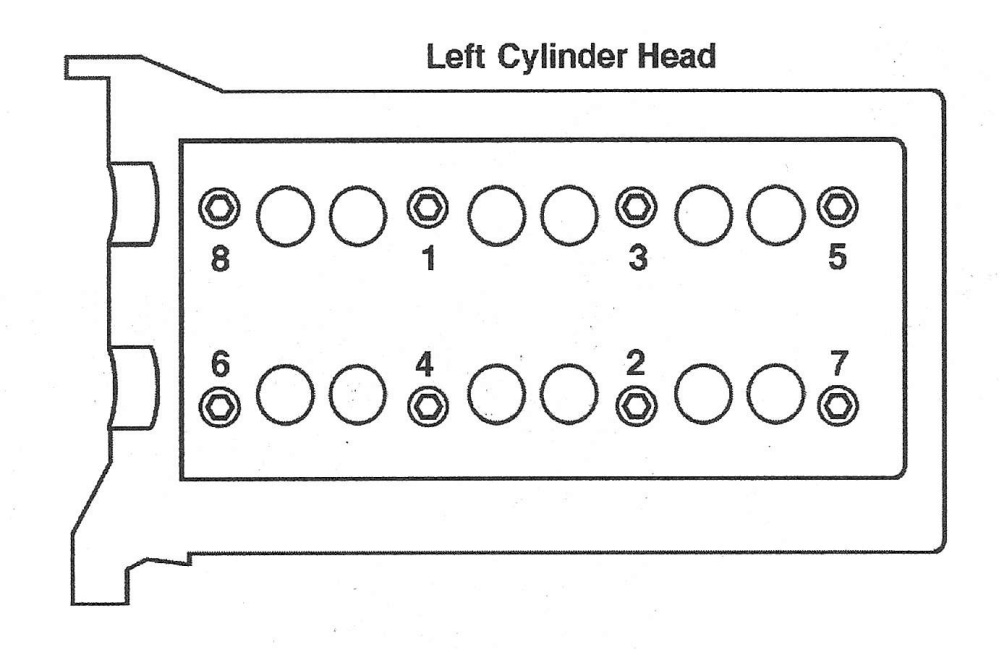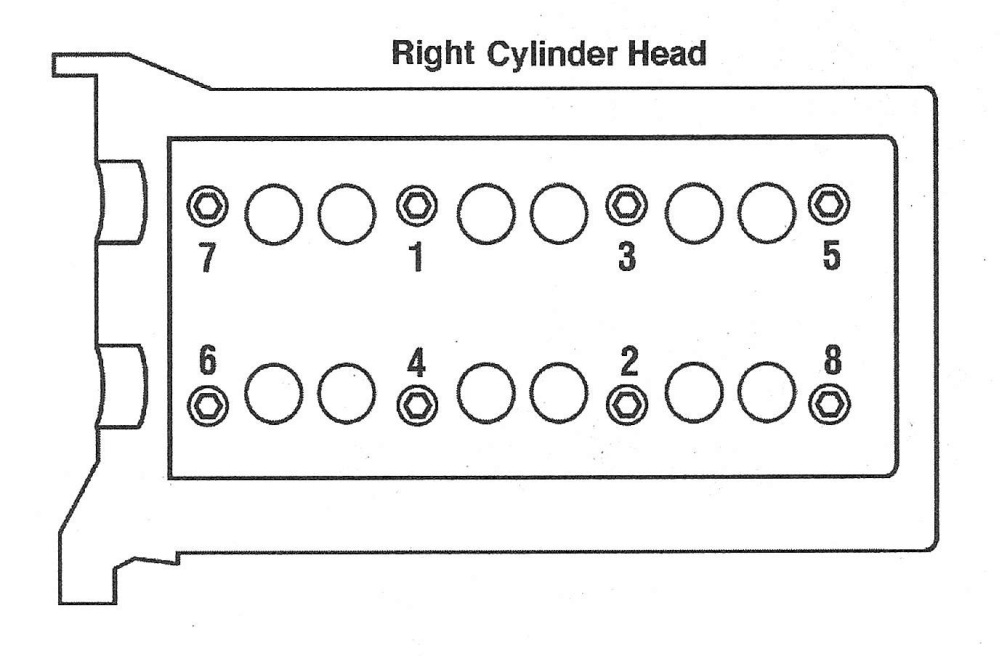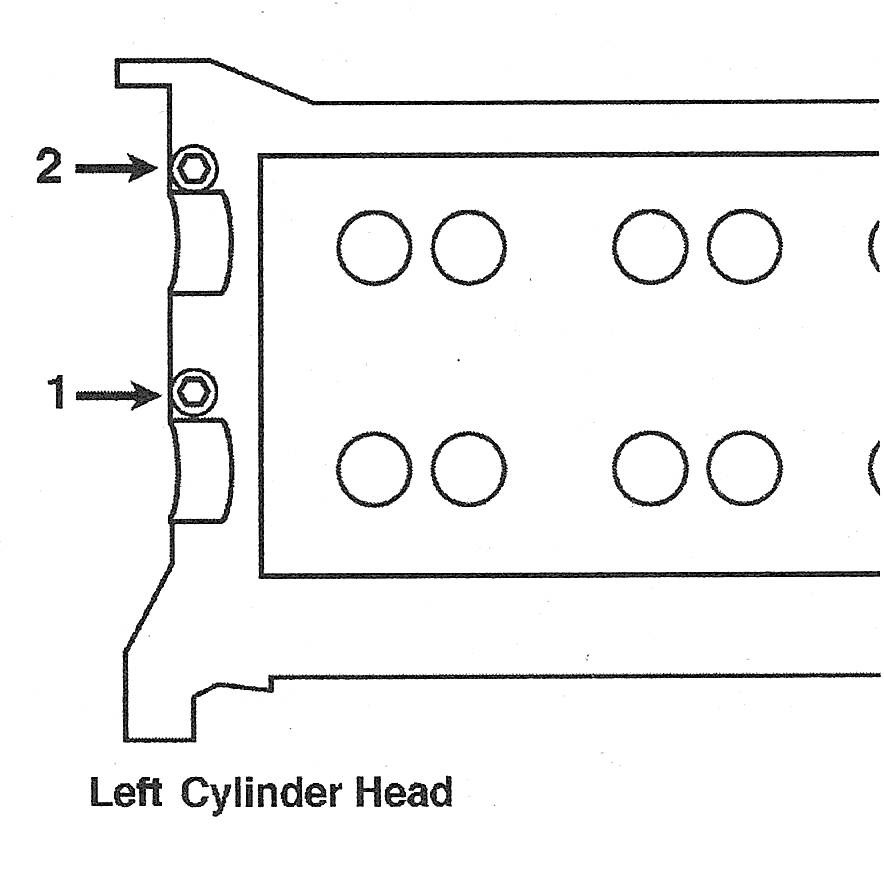Cylinder heads — removal and installation
Warning: The engine must be completely cool before starting this procedure.
Caution: New cylinder head bolts should be used when installing the cylinder head.
Note: This procedure applies to either cylinder head.
Note: The manufacturer recommends removing the engine and transaxle assembly to perform this procedure.
Removal
1. Remove the camshafts and the camshaft housings (see Camshafts, rocker arms and valve adjusters — removal, inspection and installation).
2. Remove the exhaust manifolds (see Exhaust manifolds — removal and installation).
3. If you’re removing the left cylinder head, gradually loosen and remove the two front bolts.
4. Remove the cylinder head bolts gradually and evenly, in the order opposite that of the tightening sequence, then remove the cylinder head from the engine block.
5. Remove and discard the old cylinder head gasket.
Installation
6. The mating surfaces of the cylinder heads and the block must be perfectly clean as the heads are installed.
7. Use a gasket scraper to remove all traces of carbon and old gasket material, then clean the mating surfaces with brake system cleaner. If there’s oil on the mating surfaces when the head is installed, the gasket may not seal correctly and leaks could develop.
8. When working on the block, stuff the cylinders with clean shop rags to keep out debris. Use a vacuum cleaner to remove material that falls into the cylinders.
9. Check the block and head mating surfaces for nicks, deep scratches and other damage. If damage is slight, it can be removed with a file; if it’s excessive, machining may be the only alternative.
10. Use a tap of the correct size to chase the threads in the cylinder head bolt holes, then clean them with compressed air — make sure that nothing remains in the holes. Warning: Wear eye protection when using compressed air!
11. Position the cylinder head gasket on the engine block so that the lot number stamp is on the center upper edge of the gasket facing up. Carefully place the cylinder head on the head gasket.
12. Apply a light coat of oil to the new cylinder head bolts, then install and tighten them (don’t forget the washers!) gradually and evenly, in the proper sequence (see illustrations), to the initial torque listed in this Chapter’s Specifications.
10.12a Cylinder head bolt tightening sequence left (front bank) cylinder head

10.12b Cylinder head bolt tightening sequence right (rear bank) cylinder head

13. After tightening all eight bolts to the initial torque, put a paint mark on the front edge of each bolt (the edge facing toward the front of the engine), then retighten each bolt, in the same sequence, another 90-degrees. Repeat this one more time so that the bolts have turned 180-degrees from the initial torque. Make sure to use the proper sequence.
14. If you’re installing the left cylinder head, install the two front head bolts and tighten them in the correct sequence to the torque listed in this Chapter’s Specifications (see illustration).
10.14 After you’ve tightened the other bolts of the left cylinder head, tighten these two in this order

15. If you removed both cylinder heads, install the other cylinder head now.
16. Install the intake and exhaust camshafts (see Camshafts, rocker arms and valve adjusters — removal, inspection and installation).
17. Install the camshaft timing oil control valve, the oil control valve filter and the WT-I sensor (see Variable Valve Timing-intelligent (VVT-i) — description and component replacement in Chapter Emissions and engine control systems).
18. Install the timing chains, the timing chain cover and all components attached to the cover (see Timing chains and sprockets — removal, inspection and installation).
19. The remainder of installation is the reverse of removal.
20. Install the engine/transaxle assembly. Refill the engine with oil and coolant (see Tune-up and routine maintenance).
21. Reconnect the cable to the negative battery terminal, start the engine and check for leaks.